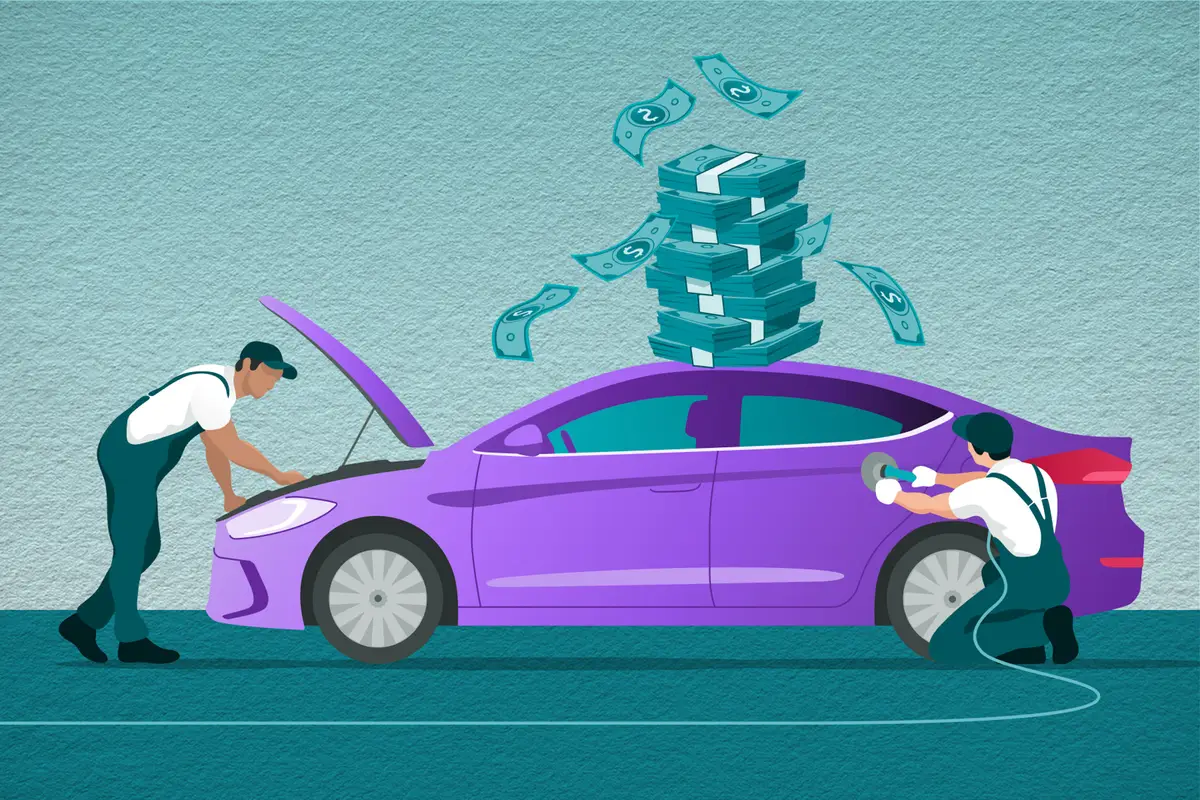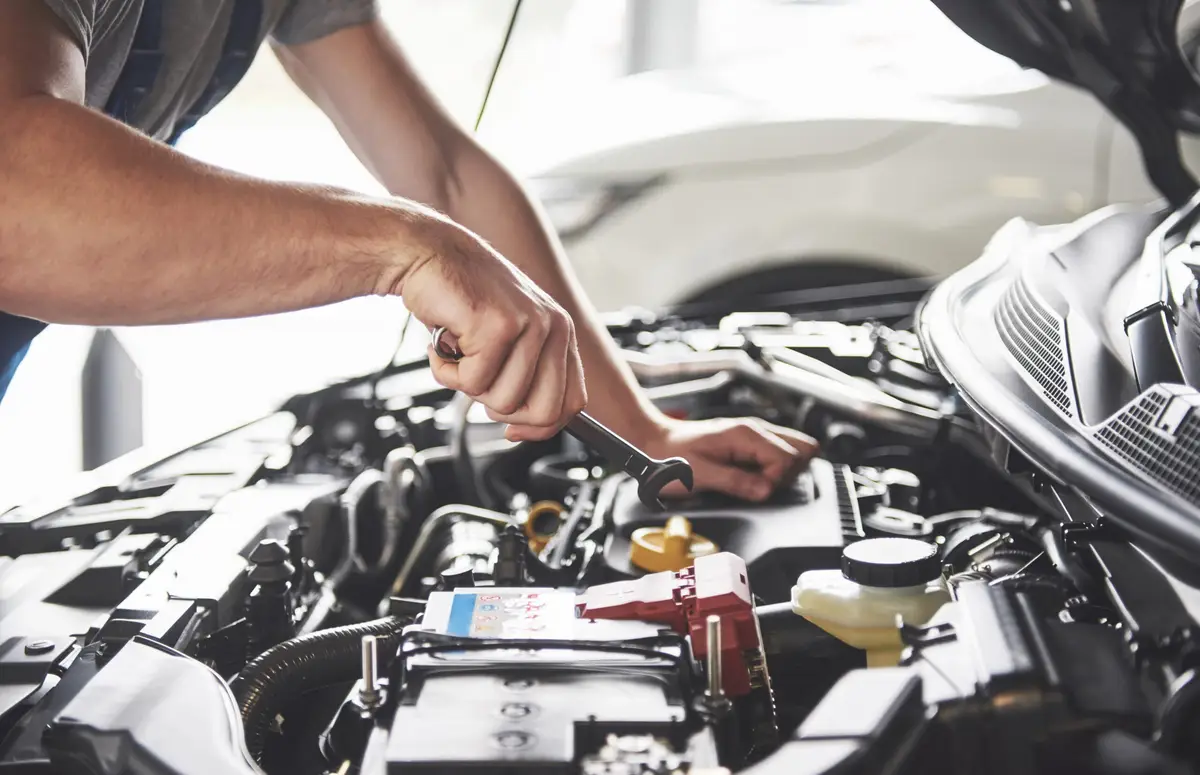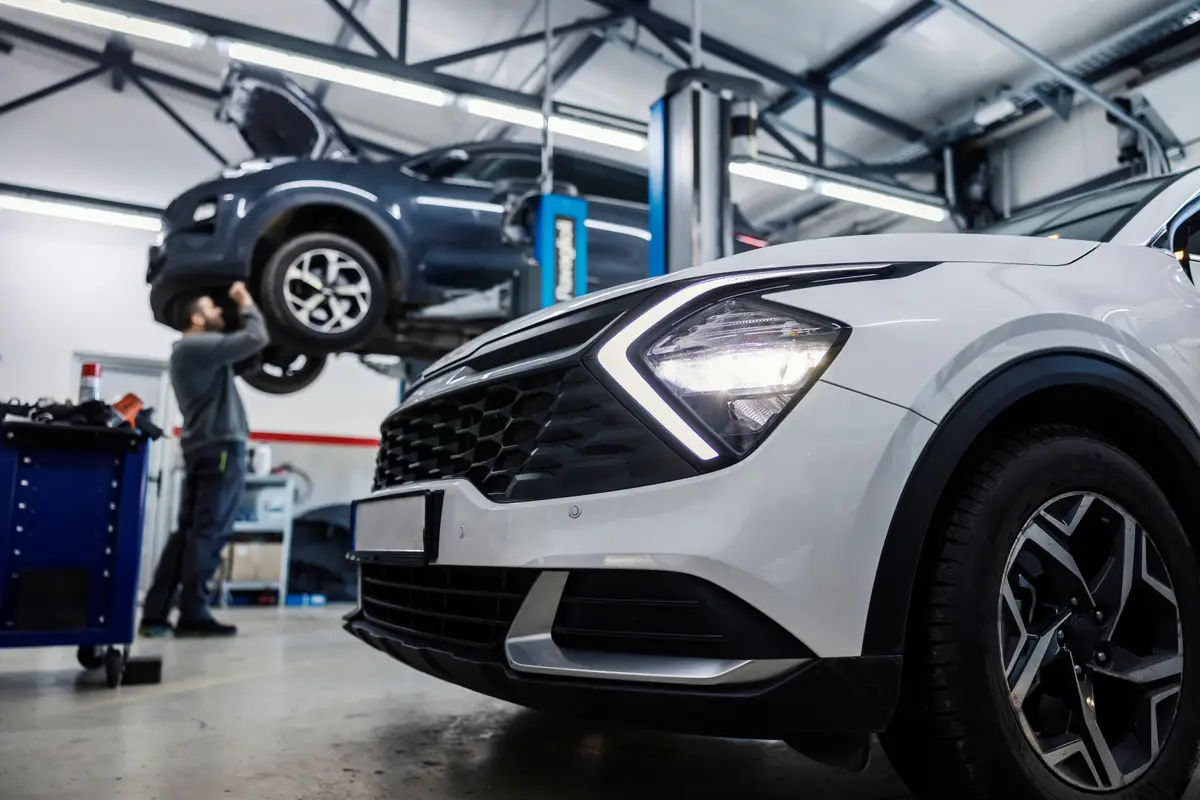How Will the Auto Parts Tariffs Impact Owners?


Editor’s note: This story was updated April 29, 2025, to include additional tariff updates.
New-car buyers aren’t the only ones who have to worry about tariffs. If you own a car, you’ll likely feel the heat of tariffs eventually — if not indirectly through higher insurance rates, then more directly when you need to do repair or maintenance work on your car. While there are some tariffs already in place that could apply to parts, such as overall rates on imports from certain countries, another 25% tariff specifically on auto parts imported into the U.S. is still scheduled to be enacted by May 3.
Several days before the parts tariff were set to go in place, the Trump administration exempted auto parts from having some of its previously instated tariffs “stack” on top of the 25% auto parts tariff. In an April 29 executive order, Trump exempted imported vehicle parts from the 25% tariff on imported aluminum and steel content, as well as the 25% tariff on goods imported from Canada and Mexico that aren’t compliant with the U.S.-Mexico-Canada Agreement. Even with that, however, companies still will have to pay at least 25% more to import parts than they did before Trump took office.
Related: More Tariff-Related News
How Do Tariffs Apply to Car Parts?
Tariffs are taxes paid by the company or individual importing an item into the U.S., and while that may not be charged to you directly, the added cost of importing that item often gets passed down to you. After all, companies like parts stores, repair shops and dealerships still want to turn a profit, and having to pay extra for the goods they stock on the shelves eats into that profit — something no business really likes.
As we’ve noted in a more detailed explainer on when tariffs get applied to a car purchase, pricing items for sale isn’t as straightforward as a product’s price increasing by 25% because it’s subject to a new 25% tariff. Numerous factors go into pricing an item, from the kinds of services offered that involve the item for sale to the popularity of an item or simply what consumers can reasonably afford to pay. Yet the economists and market experts we’ve spoken to seem to agree on the same conclusion: Prices for parts, from ball joints to fenders, are going to go up after the new 25% auto parts tariff goes into effect.
We’re already seeing some parts supplier disputes over tariffs and pricing threatening the supply chain for new cars as a result of the tariffs already in place. Companies are also already struggling to calculate the foreign steel and aluminum content of various parts due to the fact that some parts cross the border multiple times while in production, leading to delays in parts production and shipping. Turns out, drilling down into which bolts were installed on which side of the border after years of that being a nonissue is very time-consuming.
Additional tariffs on auto parts will only make this worse, and it could make replacement parts for older cars more scarce as a result. Anything from company disputes to gridlock at the border as border agents figure out how to implement new tariffs could interrupt the flow of replacement parts into the U.S. Some parts could even disappear from the U.S. market if they are simply no longer profitable to sell here after tariffs. Other shops and parts sellers may opt to source parts from suppliers that are subject to fewer tariffs or domestic suppliers that aren’t subject to tariffs at all, but even these could lead to paying more for that part. “In all likelihood, this decision would still lead to higher prices for customers because these new sources no longer have to compete with cheaper alternatives,” writes the Automotive Service Association.

How Much More Will You Pay for Parts?
Chances are, you’re already feeling some extra financial strain related to your car. The cost of car repairs has risen 27% over the past three years, per Labor Department statistics cited by the Wall Street Journal — and that’s before tariffs came into play. The tariffs that are in place at the time of this writing are already pressing prices upward.
One repair shop owner in Texas told KXXV that estimates for repairs are already 10% higher than they were in March due to various additional tariffs placed on imports — a figure that’s just going to go up from here. Parts sellers are also already seeing a sharp rise in pricing due to tariffs. Laurent Spence, who works at a NAPA auto parts store in California, told NPR that he’s now swapping out pricing daily, mostly for higher prices. Spence himself has opted to use his employee discount to stockpile extra parts for his own vehicles while they’re still less expensive along with another wrenching staple that comes from outside the U.S. — coffee.
Trump’s tariffs often stack on top of each other, which means that consumers paying 10% extra is just the start. As those tariff rates are paid by the importer — again, not you, unless your holy-grail Volkswagen part is only available on direct order from a shop in Germany — it’s hard to estimate exactly how much of that extra cost will get passed on to you as a consumer.
Some Breathing Room to Fix It Now
The good news is, unless you’re overnighting parts from Japan yourself, these extra auto parts tariffs won’t trickle down to consumers immediately. Companies have to work through inventory that’s already been imported first, all of which came in before the 25% auto parts tariff gets applied. Some companies saw the instability around foreign trade coming months ago and even stocked up on parts that might be affected. However, provided that this parts tariff remains in place for a lengthy period of time, expect to see even higher prices when that supply of pre-tariff parts gets exhausted.
Automotive Body Parts Association Executive Director Edward Salamy told the Wall Street Journal to expect commonly damaged parts like hoods, lights and fenders to start reflecting the extra tariff costs in about three months, provided the tariffs go through as planned.

What Can You Do If Your Car Needs Work?
Our advice is to use this breathing room between now and when tariffs start to affect pricing and production to get ahead of any repairs and maintenance that your car needs if you can afford it. You may want to prioritize repairs that need more foreign-made parts, or if most of your car parts are sourced from another country, prioritize either the most critical or most expensive repairs that you can afford. Also, if you’re taking a car to a shop for work, an independent mechanic is often less expensive than taking it to the dealership.
Likewise, take care of any needed maintenance items now while we’re still waiting to see what the finalized parts tariff will look like and how broadly it will be applied. Consider buying extras of routine wear-and-tear items like brake pads before prices climb even higher, too, and take advantage of any sales or discounts you can. Car clubs, for example, often have deals with certain parts stores that you can take advantage of.
While there’s always the chance that the parts tariffs don’t go into effect, there’s also the chance that these parts will be subject to other to-be-announced tariffs that stack on top of the planned parts tariff. If there’s one word to describe the Trump administration’s tariff scheme, it would be “unpredictable” — just take a look at our long, constantly updated list of tariff-related announcements, executive orders and pullbacks. This is why we suggest that you take care of necessary car maintenance and repairs now while there’s still a larger inventory of non-tariffed parts on the shelves. Vehicle maintenance in particular is the last thing you really want to gamble on, as it can lead to more expensive repairs in the future.
Everyone knows that cars aren’t completely trouble-free, and as with the unpredictable nature of these tariffs, you can’t always predict what will go wrong on your vehicle. Experts at Moneywise say that now is a good time to make sure you have an emergency fund in case you get into pricier car trouble down the line.
If you’re considering buying a new car that will likely have fewer items to repair, you may want to reconsider. Max Muncey, a spokesman for the LaFontaine Automotive Group dealership group and wholesale parts distributor, told USA Today, “Even with a 25% tariff, the effect on individual repair costs is significantly lower than on the price of a full vehicle.” Most consumable items the group sells (such as brake pads and rotors) and quick-service parts are less than $1,000, and the impact of tariffs on those less expensive components is far less than a new-car payment, and even less than the multiple thousands of dollars tariffs are expected to add to new-car prices. At a time when interest rates remain high and the average list price of a new car on Cars.com is still around $49,000, it’s a lot cheaper to ride out the repairs on your existing vehicle.
More From Cars.com:
- How Trump’s 25% Tariffs on Automobiles, Automotive Parts Will Affect You
- What Car Buyers Need to Know About Trump’s New Tariffs Going Into Effect This Month
- 2025 Cars.com Affordability Report: Best Value New Cars
- If Tariffs Increase Car Prices, How Else Can You Save Money?
- 2024 Cars.com American-Made Index: Which Cars Are the Most American?
Related Video:
Cars.com’s Editorial department is your source for automotive news and reviews. In line with Cars.com’s long-standing ethics policy, editors and reviewers don’t accept gifts or free trips from automakers. The Editorial department is independent of Cars.com’s advertising, sales and sponsored content departments.

Former News Editor Stef Schrader joined Cars.com in 2024 but began her career in automotive journalism in 2013. She currently has a Porsche 944 and Volkswagen 411 that are racecars and a Mitsubishi Lancer GTS that isn’t a racecar (but sometimes goes on track anyway). Ask her about Fisher-Price Puffalumps.
Featured stories

15-Year Car Loans Aren’t a Thing, But Americans Are Getting More Comfortable With Long Loan Terms

2025 Kia Telluride Review: Rougher Roads Ahead



